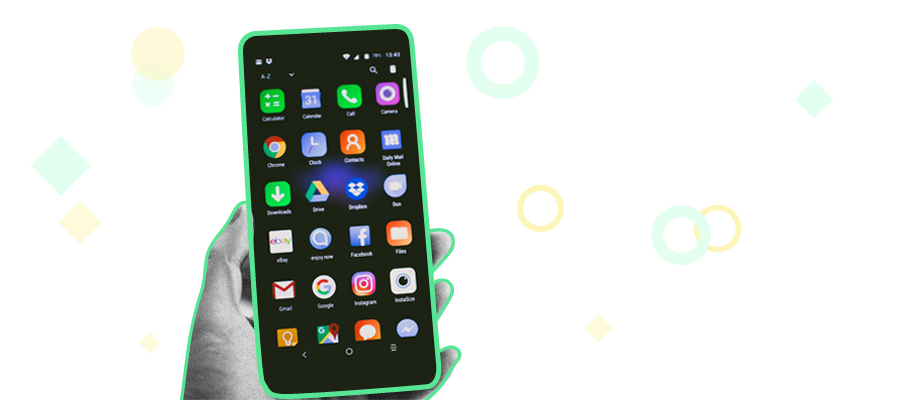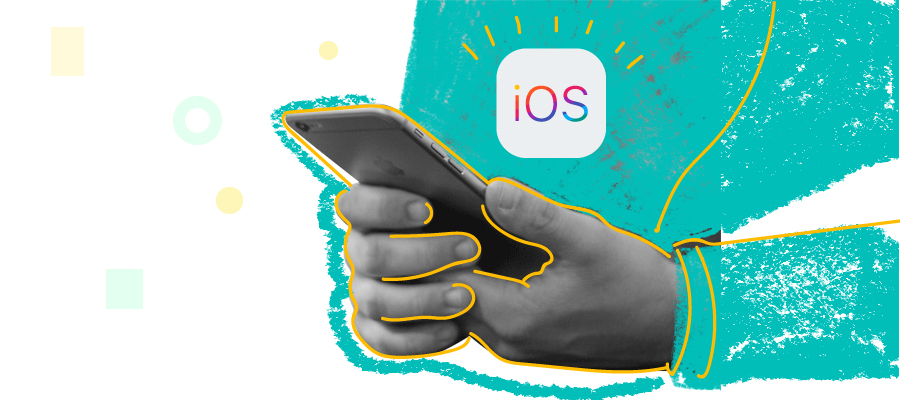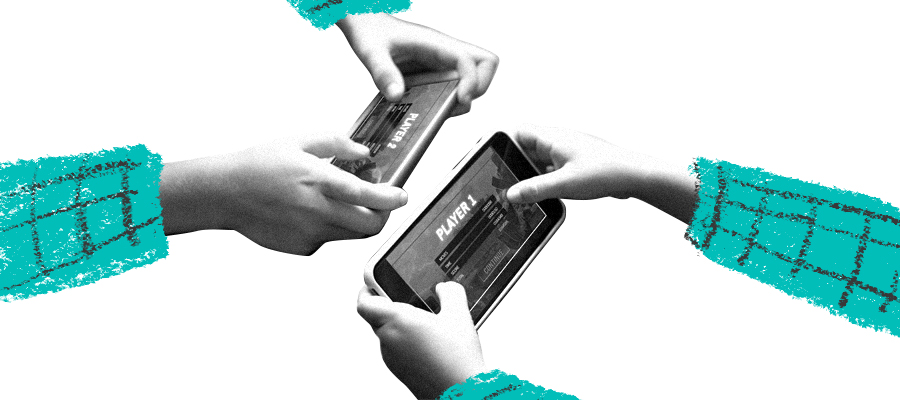Introduction
Turning a personal computer into a handheld device has been one of the most genius achievements of our lifetime. The convenience of smartphones is obvious just by the size of the market: in 2018, manufacturers sold over 1.56 billion devices and the total number of users has grown to over 3 billion!

One of the most significant reasons smartphones are so useful are the popular apps they are able to run. According to data, an average person uses around 30 programs in a month on their mobile device. The types of mobile apps people prefer depend on a number of reasons: from the built-in platform their smartphone runs on to the visual interface of the app.
The true scope of this variety can be overwhelming, so let’s take a look at some of the most popular categories of mobile applications and what makes them so different.
Design Principle Categorization
The first thing every app developer has to decide on is the platform. Although Android and iOS devices account for more than 90% of smartphones out there, the choice is a bit more complicated than just between the two. The evolution of web technologies has allowed programmers to create more versatile, platform-independent tools and whole mobile applications. So, the following types of application software can be identified:
1. Native (Single-Platform) Applications
If the developer is sure that their target audience mostly uses one specific platform, it would be unnecessary for them to implement cross-platform solutions. In these cases, the team concentrates on a single platform, which results in a native app.
The systems different devices are equipped with are usually distinctive enough to be mutually exclusive (Apple users can’t install Android programs, and vice versa). However, the development of a native app for one platform can often be helpful for subsequent development for a similar solution for another one.
Despite the fact that native apps lose some cross-platform versatility, there are still enough benefits to pick them over other types of software. Some of the most notable ones are:
- Stability and dependability;
- Consistent UI and UX;
- Easier customer support and maintenance (however, more difficult and resource demanding if you have to take care of a duplicate app on different platforms);
- A variety of templates, APIs, and other helpful tools available;
- Efficient use of device resources.
As we’ve discussed earlier, the most popular smartphone operating systems are Android and iOS. Let’s take a closer look at native apps for these platforms.
1.1. Android Apps

Google Play Store, the marketplace for Android applications, has more than 2 million different programs on it. Although such a variety of products seem impressive at the first glance, there is actually a glaring problem connected to it.
As a platform, the Play Store is fairly lenient towards creators – almost anybody can upload an application. This makes any content curation and quality control effectively impossible. That’s why the marketplace if full of clone apps, programs that don’t work at all, and in some cases even scam applications.
On the other hand, Android apps are easy to build and customize. The most popular tools used to create these apps are Java or Kotlin IDEs (like official Android Studio), React-Native or Angular Material Design.
1.2. iOS Apps

Apple is much stricter when it comes to content filters. If you want your app to appear on the Apple App Store, you will need to pay a fee for each year it stays there. Obviously, this leads to a better and more consistent app selection.
iOS software is often described as more responsive and better maintained. However, it gives the end user much less freedom in how they want to use their device. The most popular iOS apps are created using Objective-C and Swift.
2. Web Applications
Web applications provide a true cross-platform experience for any smartphone device. Such flexibility is achieved through the use of HTML5. This technology allows composure of online web pages with an app-like interface.
In addition to platform independence, these applications don’t use a lot of device resources. The only thing you need for them to work is a steady internet connection. There is no need to install anything either – just create a bookmark in your browser and the app will always be at your fingertips.
There are some major drawbacks to this app type. First of all, the internet connection requirement is mandatory. Secondly, at the moment there are not a lot of options in terms of APIs for a developer. Lastly, all the data is saved on a remote server, and if there is any problem with it, the app will be down too.
3. Hybrid Applications
The last type of software represents the middle ground between the previous ones. In most cases, they can be defined as web applications under the native shell. These hybrids provide cross-platform tools of web applications with important native features, such as local storage and a wide range of APIs for a developer to use.
Unfortunately, they also combine negative aspects of both native and web applications. For example:
- They cannot work without an internet connection;
- The UI is inconsistent between different platforms;
- They are not as fast as native software.
To develop a hybrid app, professionals prefer to use HTML5, JavaScript or CSS.
Functionality Categorization
Another way to classify the smartphone applications, more meaningful to app users, is by their purpose. There are 49 app categories on Google Play Store (16 of them for different gaming genres) and 41 categories on iOS App Store (19 for gaming). Let’s take a closer look at the most popular mobile app types.
1. Tools (or Utilities)
Tool applications are some of the most basic programs you can install on your device. You either visit this section of the marketplace right after you’ve bought your device or never if they are already installed.
This type of apps is more popular with Android users since they care more about optimizing their device performance. For example, Clean Master is still among the 10 most popular Android apps.
2. Social Networking

Facebook, Instagram, Twitter, YouTube, Skype, TicToc, Snapchat… The list of apps we use to connect with one another goes on and on. Social networks have become one of the biggest parts of our lives, and it is obvious just from how popular these applications are. On both platforms, they occupy the top of the list of the most downloaded apps.
The feature has become so popular that more and more apps from other categories are integrating social networking features in one form or another. The most obvious example is the recent rise in popularity of Venmo – a mix of financial and social networking app, and FitBit – a social network for fitness enthusiasts.
3. Lifestyle
What developer wouldn’t want users to use their apps every day? Lifestyle applications easily achieve this goal due to being extremely helpful and improving people’s quality of life. Although they are usually not the juggernaut modern social networks are, they are well-known and loved.
Apps of this category can usually be divided into the following subcategories:
- Fitness and wellness helpers;
- Dating applications;
- Travel guides;
- Music streaming services.
Usually, lifestyle apps have a specific type of product connected to them. That’s why they are often sponsored and promote a certain brand.
4. Productivity
This type of programs is somewhat similar to the previous category. However, in most cases, they have broader applications and don’t focus on a certain product. For example, a simple calendar app is often categorized as a productivity app. It allows you to plan your actions, increase your efficiency, and follow your schedule.
Finance apps are another great example of a productivity app. There are dozens of apps that can help you to effectively manage your funds and be more mindful about the way you spend your money.
5. Entertainment
If you’re looking for something to make you laugh or to help you productively spend your free time, applications from this category are what you’re looking for. This category is very broad and can contain educational apps, video streaming services, and silly prank apps alike. It is not surprising, as people tend to be entertained by wildly different things.
Great examples of an entertainment type app include:
- Duolingo;
- Coursera;
- Netflix;
- Comedy Central.
6. Games

Games are another way to use your phone to spend your free time. For a long time, smartphones had been a platform for casual gaming, with puzzles being the most popular category of games and Candy Crush at the helm.
However, with the rise of processing capabilities and growing screen size, more large gaming companies turned their gaze onto mobile gaming as a valid source of income. The recent Fortnite craze that managed to migrate onto handheld devices is clear evidence that the industry will continue to grow and evolve.
Plus, the development costs for making a mobile game are drastically different from the price companies have to pay to create a full AAA game.
Summary
With about half of the world using smart handheld devices, it is obvious that we need more solid mobile applications. The future of mobile software is bright: most companies recognize that personal computers will become obsolete with how powerful the computers people have in their pockets are getting.
As the technology behind the smartphone apps evolves, we will see many more types of apps in the nearest future. For example, VR and AR mobile experiences are soon to be our everyday reality. The sooner it happens, the more groundbreaking the shift in lifestyle, education, and gaming software will be. So, if you want to be prepared, stay tuned for more updates. And if you are already sure about the type of app you want to focus on, contact us at IDAP to turn your idea into reality.



